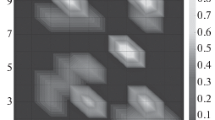Abstract
Recently, the industry of drone systems has come into the spotlight because a new potential market has been revealed. A considerable number of drones are deployed worldwide as they can be used in many applications, providing a broad range of services, such as monitoring the surrounding environment, delivering services, in farming, and in rescue activities from disasters to accidents. This expansion is fostering the development of a comprehensive approach, including the construction of general systems, such as cyber-physical systems and IoT middleware platforms. In terms of the quantitative aspects of the drone industry, we still have many issues to solve and improve, such as privacy protection, human safety, improvement in resources, and specifically, power consumption and efficiency. To overcome these problems, systems must be able to generate an efficient and easy-to-follow path that is able to dynamically adjust to new situations. Thus, we propose an ONLINE/OFFLINE path planning algorithm and evaluate the results of a simulation using a drone kit with a software-in-the-loop simulator. The ONLINE and OFFLINE path planning algorithm is applied to discover a path to the destination in a changeable situation, and it is simulated on a real-life map, which includes a restricted area.












Similar content being viewed by others
References
Tariq R, Rahim M, Aslam N, Bawany N, Faseeha U (2018) DronAID: a smart human detection drone for rescue. In: 2018 15th international conference on smart cities: improving quality of life using ICT & IoT (HONET-ICT), Islamabad, pp 33–37. https://doi.org/10.1109/HONET.2018.8551326
Mozaffari M, Saad W, Bennis M, Nam Y, Debbah M (2019) A tutorial on UAVs for wireless networks: applications, challenges, and open problems. IEEE Commun Surv Tutor 21(3):2334–2360. https://doi.org/10.1109/COMST.2019.2902862
Erdelj M, Natalizio E, Chowdhury KR, Akyildiz IF (2017) Help from the sky: leveraging UAVs for disaster management. IEEE Pervasive Comput 16(1):24–32
Bassi E (2019) European drones regulation: today’s legal challenges. In: 2019 international conference on unmanned aircraft systems (ICUAS), Atlanta, GA, USA, pp 443–450. https://doi.org/10.1109/ICUAS.2019.8798173
Unmanned Aircraft Systems (2016) https://www.faa.gov/uas/. Accessed 7 Mar 2016
Federal Aviation Adminstration (FAA) (2016) DC is a no drone zone. http://www.faa.gov/uas/no_drone_zone/dc/. Accessed 4 Jun 2016
Namuduri K, Wan Y, Gomathisankaran M, Pendse R (2012) Airborne network: a cyber-physical system perspective. In: Proceedings 1st ACM MobiHoc workshop airborne network communications, Hilton Head, SC, USA, pp 55–60
Motlagh NH, Taleb T, Arouk O (2016) Low-altitude unmanned aerial vehicles-based internet of things services: comprehensive survey and future perspectives. IEEE Internet Things J 3(6):899–922
Cochez M, Periaux J, Terziyan V, Kamlyk K, Tuovinen T (2014) Evolutionary cloud for cooperative UAV coordination. University Jyväskylä, Jyväskylä
Janarthanan A, Ho HW, Gopal L, Shanmugam V, Wong WK (2019) An unmanned aerial vehicle framework design for autonomous flight path. In: 2019 7th international conference on smart computing and communications (ICSCC), Sarawak, Malaysia, Malaysia, pp 1–5. https://doi.org/10.1109/ICSCC.2019.8843618
Yang L, Qi J, Xiao J, Yong X (2014) A literature review of UAV 3D path planning. In: Proceeding of the 11th world congress on intelligent control and automation, Shenyang, pp 2376–2381
Yanmaz E, Kuschnig R, Quaritsch MR, Bettstetter C, Rinner B (2011) On path planning strategies for networked unmanned aerial vehicles. In: 2011 IEEE conference on computer communications workshops (INFOCOM WKSHPS), Shanghai, pp 212–216
Mcfadyen A, Mejias L (2016) A survey of autonomous vision-based see and avoid for unmanned aircraft systems. Prog Aerosp Sci 80:1–17
Tulum K, Durak U, Yder SK (2009) Situation aware UAV mission route planning. In: 2009 IEEE aerospace conference, Big Sky, MT, pp 1–12
Hernández-Hernández L, Tsourdos A, Shin HS, Waldock A (2014) Multi-objective UAV routing. In: 2014 international conference on unmanned aircraft systems (ICUAS), Orlando, FL, pp 534–542
Mokrane A, Braham AC, Cherki B (2020) UAV path planning based on dynamic programming algorithm on photogrammetric DEMs. In: 2020 international conference on electrical engineering (ICEE), Istanbul, Turkey, pp 1–5. https://doi.org/10.1109/ICEE49691.2020.9249903
Yin C, Xiao Z, Cao X, Xi X, Yang P, Wu D (2018) Offline and online search: UAV multiobjective path planning under dynamic urban environment. IEEE Internet Things J 5(2):546–558. https://doi.org/10.1109/JIOT.2017.2717078
Jacob S, Menon VG, Parvathi R, Shynu PG, Shemim KSF, Mahapatra B, Mukherjee M (2020) Intelligent vehicle collision avoidance system using 5G-enabled drone swarms. In: DroneCom '20: proceedings of the 2nd ACM MobiCom workshop on drone assisted wireless communications for 5G and beyond, pp 91–96. https://doi.org/10.1145/3414045.3415938
Li C, Xie X, Luo F (2019) Obstacle detection and path planning monocular vision for unmanned aerial vehicles. In: Chinese automation congress (CAC), pp 3305–3309. https://doi.org/10.1109/CAC48633.2019.8996752
Daramouskas I, Perikos I, Hatzilygeroudis I, Lappas VJ, Kostopoulos V (2020) A methodology for drones to learn how to navigate and avoid obstacles using decision trees. In: 11th international conference on information, intelligence, systems and applications (IISA), pp 1–4. https://doi.org/10.1109/IISA50023.2020.9284337
Funding
Funding was provided by the National Research Foundation of Korea (Grant Nos. NRF-2018R1D1A1B07040573, NRF-2019R1I1A1A01063619).
Author information
Authors and Affiliations
Corresponding author
Ethics declarations
Conflict of interest
The authors declare that they have no conflict of interest.
Additional information
Publisher's Note
Springer Nature remains neutral with regard to jurisdictional claims in published maps and institutional affiliations.
Rights and permissions
About this article
Cite this article
Choi, K., Kim, JH. UAV path planning method for avoiding restricted areas. Intel Serv Robotics 14, 679–690 (2021). https://doi.org/10.1007/s11370-021-00386-3
Received:
Accepted:
Published:
Issue Date:
DOI: https://doi.org/10.1007/s11370-021-00386-3




